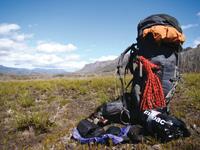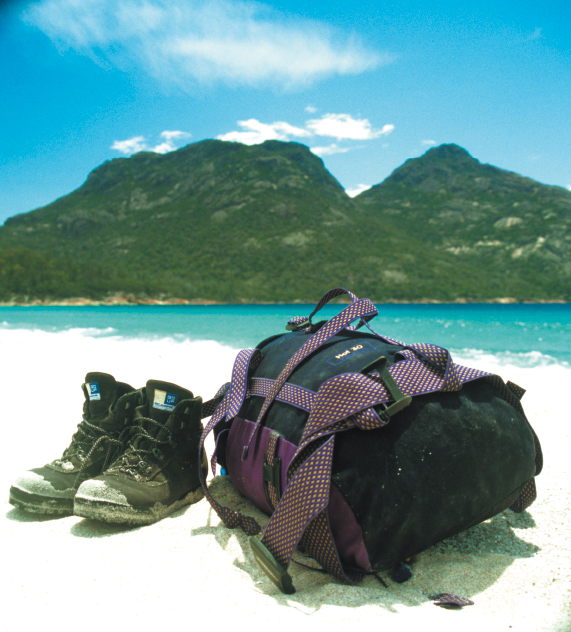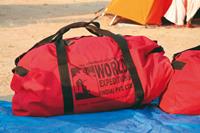Blog home / Tips On How Students Can Save Money When Travelling By Preparing And Packing Smartly
With the help of their teachers, students can begin culling the expenses associated with an overseas trip as soon as they make the commitment to go. With detailed trip notes always available (usually supplied by the operator) and a whole range of country guides at hand for reference, there is no reason why students, with the assistance of their teachers, cannot spend less on overseas school trips, making them more affordable for more students. Detailed information and a well prepared plan will allow students to prepare smartly and save time and money; ultimately allowing them to make the most of their time abroad.
Consider Everything, Before You Leave Pack carefully, you may have to carry it!
Pack carefully, you may have to carry it!The first thing to do when you are planning an overseas adventure with a group of students is to
write down everything that students will need on the trip. This list should include every item that they will require along the journey, as well as items that might be required when the expedition does not go exactly to plan. For example, this list should include items like visas and passports, as well as things like wet weather gear – even if you are visiting a country in its warmer months. Even though you might be expecting sunny skies, the weather could turn in which case students will need the appropriate clothing right there and then. It is much better that they have this clothing on hand rather than being forced to spend money on clothing while they are there that was not included in the original budget that was presented to parents.
Another cost that should be considered before departure is the
luggage weight restrictions that might be applied by the airline or the operator. Failure to comply with these restrictions could result in students being asked to pay for their extra luggage, which once again was not included in the original budget that was presented to their parents.You should also consider that what the airline permits you to carry does not include what students are wearing on their back when they board the plane. Ask your students to board the plane wearing the clothing and carrying the equipment that is the heaviest, for instance, hiking boots and daypack plus contents. They can always change into some more comfortable shoes when they are on the plane. Most international flights will permit travellers to carry one piece of luggage that weighs between20 and 23kg (economy class), and if you require more you will then be asked to pay excess luggage fees. You should also ask that students weigh their luggage before they leave home, so that problems with overweight bags are not discovered at the airport.
It is more than likely that your expedition will include a significant amount of physical activity, in the form of hiking, camping, working on developing the infrastructure of communities and villages, sightseeing and just general walking when students are exploring the different destinations they visit. With these activities comes the acquisition of good quality footwear, socks, daypacks and backpacks and water bottles, which must be purchased prier to departure. Students who need to purchase these items while they are away, whether it is because they did not pack them or because they packed an item that was a poor quality, will find themselves spending money that was not included in their allocated budget. Parents should be informed what the students will need each item for so that they can take this information into consideration when they are purchasing the items their child needs. Students who are camping might also be required to acquire sleeping bags and mats, pillows, head torches, and possibly cold weather clothing. There are several things you can look into before you go which can result in saving money:
- Determine what equipment the school and/or operator will provide, and what equipment the individual students will provide
- Encourage students and parents to borrow gear from family or friends, except where hygiene and best fit are priorities, for instance, thermals, socks and footwear
- Determine if you can you hire gear and equipment from the operator or a local supplier, especially if it is equipment that students will not use regularly
- Encourage parents to think about how often their child will use the equipment they purchase, for instance, can they justify purchasing the most expensive pack if they think their child is only going to use it once?
- Inform parents what their children will be using each item for so they can take this information into consideration when they are purchasing the items their child needs, for instance, will the sleeping bag they buy their child be used inside a cabin in a warm temperature, or for outside camping in arctic conditions?
 Break in your shoes before you travel
Break in your shoes before you travelYou should also instruct parents to source any gear or equipment that they plan to borrow or purchase as far in advance as possible. Clothing and
equipment needs to be tried and tested before the main event, and this will not be possible if it is sourced the day before the student departs. If possible, you should also organise a mini expedition before the main journey, which will give students the chance to test their equipment and clothing and see that it fits them, is of a good quality, and is usable in the conditions they will experience when they are travelling. A mini expedition of this nature will allow students the time to make any changes to sizes or fittings that they need, as well as purchase equipment that they might have planned to borrow before it is too late. It will also give teachers an opportunity to see that all students embarking on the journey are well prepared and have everything that they need to make the trip as enjoyable as possible.
Equipment Tips That Will Save MoneyFor adventures where students will be participating in a lot of physical activity, footwear and socks become a top priority. Shoes must be fitted and comfortable, and must also bea proven off-road shoe or boot. Students should only need to pack one good pair of shoes that will enable them to do everything, and there are plenty of shoes and boots that are suitable for both the towns and tracks. You should provide parents with detailed information about the exact activities that students will be participating in during the journey. This information will come extremely handy when they are souring the right footwear of the appropriate quality to enhance their child’s experience.
Clothing that is suitable for diverse weather conditions will allow your students to reduce the amount of clothing they take. Soft merino wool thermals and t-shirts will be appropriate for nearly all weather conditions because they regulate the body temperature extremely effectively. The other benefit is that they are odour resistance, which allows students to wear them for nearly twice as long as cotton and synthetic clothing, rather than buying numerous pieces.
Securing luggage and valuables is also very important when you are travelling, especially if your group is sharing accommodation with other groups along the way. Students must be encouraged to protect their valuables from opportunistic travellers, pickpockets and thieves. This begins with
clear labelling of luggage, including the student’s name, school, group and if applicable, operator details. Contact details must also be included on this label. Students should lock all access points into their luggage, including their daypack, with padlocks or combination locks. They should also be instructed to wear money belts or neck wallets that will allow them to keep their cash, traveller cheques and passport out of sight, out of open pockets and close to them at all times. If students are going to use their wallets, consider asking them to attach their wallets to a chain, especially in cities that have high rates of pickpockets, such as Rome, Paris and Athens.
If students have luggage that is not unique in appearance, they should tie a ribbon or place a unique sticker somewhere obvious. It is truly amazing how easily luggage can decide to take its own holiday, or accidentally (or deliberately) be picked up by some else. The cost of loosing luggage, which is usually the cost of replacing luggage, has the power to truly blow the budget. You should also spend some time researching the best travel insurance option for your group.
 WES provides duffel bags to use on certain expeditions
WES provides duffel bags to use on certain expeditions
- Using home supplies, students should pour sunscreen, shampoo, conditioner, and other lotions into smaller bottles that will travel more efficiently. Instruct them to pack only a little bit more than what they expect to use
- Ask them to pack some laundry powder so that smaller items of clothing can be washed in hotels or hostels. This trick can save a lot on laundry costs, which can very quickly add up when students are submitting their own clothes for cleaning. To help with the drying process, encourage students to pack quick-dry clothing that is made from synthetic fabrics, like board shorts, t-shirts, technical pants and shirts from outdoor stores
- Inform students and parents that torches with LED bulbs will not need bulb replacements and they are a lot more conservative on battery power; which means less spare batteries to purchase and carry. Cheaper torches can often cost a lot in replacement batteries, and eventually, to replace the torch itself
- Ask students to pack a small repair kit so they can do their own mending of clothing and equipment along the way. This includes a needle and thread, spare buckles, buttons, safety pins, and Gaffa tape for mending tears
- Put a pillow slip on the equipment list, or even better, a sleeping bag liner with a pillow slip attached, if your group will be staying in hostels. Apart from the obvious hygiene benefits, students will save themselves the cost of hiring a pillow slip and bed sheet
As powerful and beneficial as travelling may be, the costs can very quickly add up, placing many wonderful trips and experiences out of the reach of a lot of students. However, these costs can very easily be kept to a minimum with some well thought out planning and smart preparation, as well as a comprehensive briefing well before departure. With these simple tricks of the trade, which will enable more students to experience the wonders of the world, there is no reason not to start planning your group’s next adventure right now.
THIS ARTICLE WAS WRITTEN BY OUR FRIEND AND 'GEAR GURU' CHRIS MEIN FROM PADDY PALLIN. IT FEATURED IN ISSUE 32 OF ACTIVE EDUCATION MAGAZINE.
